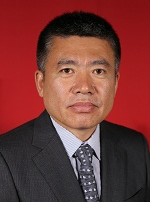The Puppet Manchu Palace Museum is a Palace Ruins Museum established on the site of the Puppet Manchu Palace. It is mainly responsible for the protection, restoration, utilization, collection, preservation and research of cultural relics and materials of the Puppet Manchu Palace. It also digs deeply into the special historical and cultural connotation of the Palace site and holds exhibitions to reveal it. To expose Japan's invasion of Northeast China, enslavement and maiming of the people of Northeast China and the traitor puppet regime of Puyi, the puppet emperor of Manchu Dynasty, as well as their treacherous pursuit of national pride, loyalty to the criminal acts of Japanese aggressors and the distorted court life of that year, and to carry out modern history and patriotic education. In July 1962, Zhou Yang, then Vice Minister of Propaganda, made an instruction after inspecting the old site of the Puppet Manchu Palace that "Puppet Manchu Palace should be managed by the cultural department to make it a place for exhibiting the first half of the life of the last emperor of China and the crimes of Japanese imperialist aggression against the Northeast". The Standing Committee of the Jilin Provincial Committee of the CPC made a decision on December 1, 1962: "It was agreed to submit the puppet Palace site to the Provincial Bureau of Culture for the preparation of the exhibition hall." On December 24 of the same year, the Puppet Palace Exhibition Hall of Jilin Province was founded. At that time, the name of the Exhibition Hall was "The 14-year Crime Exhibition Hall of Japanese Imperial Aggression in Northeast China". On August 16, 1982, with the approval of the People's Government of Jilin Province, the exhibition hall of the Puppet Palace in Jilin Province was restored to its construction system, and the old site of the puppet palace was taken over from Changchun No. 2 Nonmetallic Material Testing Machine Factory as the site of the museum. In 1984, the main buildings in the core area of the Puppet Manchu Palace, such as Qinmin Building and Qixi Building, were successively restored and opened to the outside world. The open area was less than one tenth of the original area of the Puppet Manchu Palace site. Located at No. 5 Guangfubei Road, Kuancheng District, Changchun City, the old site of the Puppet Manchukuo Palace is the Palace site of Emperor Aixinjueluo Puyi when he was the puppet emperor of the Puppet Manchukuo State in the late Qing Dynasty. It covers an area of 137,000 square meters. It is one of the relatively complete existing palace sites in China. It is also one of the ones where Japan invaded northeast China by force and carried out fascist colonial rule. The most typical historical witness. There are many existing cultural relics and buildings in the core reserve of the Puppet Manchu Palace Site, which are divided into the inner court and the outer court with the Zhonghe Gate as the boundary. The Inner Court mainly consists of Zhexi Tower, Dongyu Garden, Xiyu Garden, Tongde Hall, Painting and Calligraphy Building, etc. It is the living area of Puyi and his dependents. Outer court area mainly includes Qinmin Building, Huaiyuan Building, Jiale Hall, Palace House and so on. It is Puyi's administrative activity area. In addition, there are ancillary facilities such as Jianguo Temple, Zhixiuxuan, Changchunxuan, Zhonghe Gate, foreign dining room, Chinese dining room, imperial garage, stables, racetrack, flower cellar, guard barracks and guard barracks. The predecessor of the Puppet Manchu Palace was the Jilin-Heilongjiang Transport Bureau, which managed salt affairs in Jilin and Heilongjiang provinces during the Republic of China. On March 9, 1932, with the support of the Japanese invaders, Puyi assumed the post of "Manchukuo Governor". On April 3, Puyi moved here and became "Manchukuo Governor". In 1934, the Puppet Manchu Emperor was also the most typical historical witness of Japan's invasion of Northeast China by force and the implementation of fascist colonial rule. There are many existing cultural relics and buildings in the core reserve of the Puppet Manchu Palace Site, which is divided into the Inner Court and the Outer Court by the Zhonghe Gate. It is also the most typical historical witness that Japan invaded northeastern China by force and carried out fascist colonial rule. There are many existing cultural relics and buildings in the core reserve of the Puppet Manchu Palace Site, which are divided into the inner court and the outer court with the Zhonghe Gate as the boundary.
